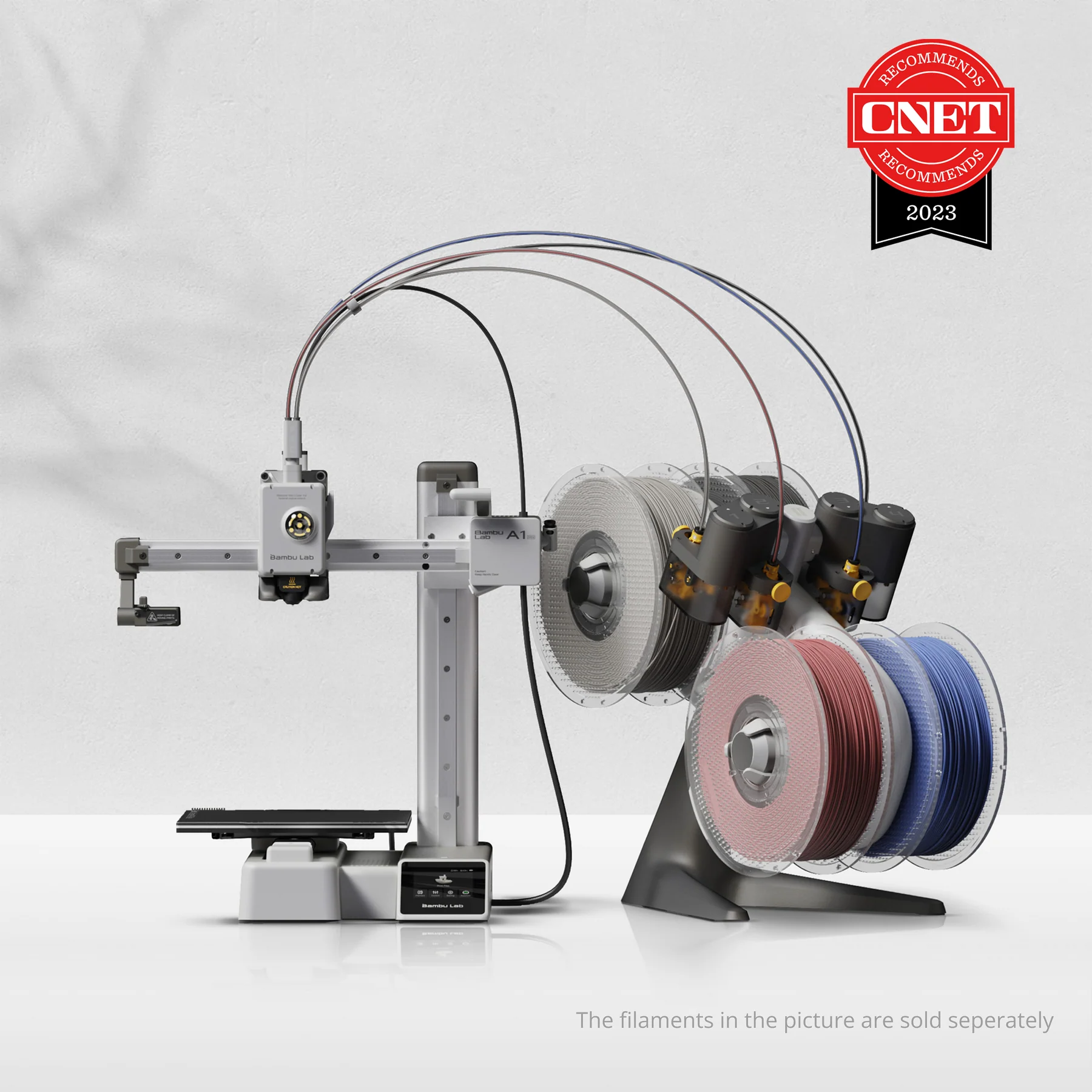Compare A1 Mini vs Ender 5
Comparison between the best 3D printers
Choose the best 3D printer at the best price. The cheapest 3D printers are here.
Buy a 3D printer here with 3D Fila.
 |
 |
|
| Model | A1 Mini |
Ender 5[BUY Ender 5] |
| Printing Material | Filament | Filament |
| Buy Filament for Bambu Lab A1 Mini | Buy Filament forCreality 3D Ender 5 | |
| Estimated price | $549,00 | $399,00 |
| Manufacturer | Bambu Lab | Creality 3D |
| Release Year | 2023 | 2020 |
| Print Volume [mm] | 180x180x180 | 220x220x300 |
| Printer Size [mm] | 315x347x365 | 485x510x552 |
| Weight [kg] | 5,5 | 11,8 |
| Power Loss Recovery | YES | YES |
| Enclosed printer | NO | NO |
| Bed Leveling | Automatic | Manual |
| Filament End Sensor | YES | NO |
| Bed type | Heated | Heated |
| Power supply system | Direct Drive | Bowden |
| Standard nozzle | 0,4 | 0,4 |
| Maximum Nozzle Temperature [°C] | 300 | 255 |
| Maximum Bed Temperature [°C] | 80 | 100 |
| Maximum printing speed [mm/s] | 500 | 180 |
| Filament holder | YES | YES |
| Camera for supervision | YES | YES |
| Recommended filaments | PLA, PETG, TPU, PVA | PLA, TPU, ABS, PETG |
| Recommended slicers | Bambu Studio, Super Slicer, Cura, Prusa Slicer, Orca | Cura, Simplify, Slic3r |
| Maximum Resolution [mm] | 0,1 | 0,1 |
| Processor | 32-bit Silenciosa | 32 bits |
| Display | Touchscreen 2,4'' | Mono |
| Power Supply | 150 W | 24V / 360W |
| Connectivity | Wifi, Bambu bus, Cartão SD | SD / USB |
| Operating systems | Windows, Linux, Macbook | Windows, Mac, Linux |
| Date of registration in the system | 2024-04-10 | 2021-04-15 |
| Release date | 2023 | 2020 |
| Extra features | The Bambu Lab A1 Mini stands out not only for its impressive speed and automatic calibration, but also for its multi-color printing capability thanks to AMS Lite. This innovative system makes multi-color printing easy, making it accessible to everyone. AMS Lite, specific to the A1 Mini, supports up to four different materials simultaneously, providing creative freedom without complications. With comprehensive sensors for energy monitoring and recovery, a camera for timelapses and Wi-Fi control, the A1 Mini and AMS Lite together offer an intuitive and advanced 3D printing experience, ideal for materials such as PLA, PETG and TPU, and designed for simplicity and fast maintenance with quick-change nozzles. | Crealitys Ender 5 stands out with a solid frame and a larger 220 x 220 x 300mm print volume. Its assembly is simple and quick, offering high print quality and speeds of up to 80mm/s. With a magnetic bed, it makes it easy to remove prints. Notable for being hackable and expandable, the Ender 5 continues Crealitys innovative tradition in the affordable 3D printer market. Equipped with a 350W/24V Meanwell power supply, it heats up quickly, in addition to having efficient cable management and modified Marlin firmware. Its unique design includes dedicated stepper motors for each axis and smooth movement on the Y axis, providing more consistent and detailed prints. |
| Support for multiple colors and materials (AMS and CFS) | YES | NO |
Notes * |
||
| Cost-benefit | 7 / 10 | 7 / 10 |
| Hardware | 4.2 / 10 | 1.5 / 10 |
| Tela | . | . |
| Print volume | 3 / 10 | 3 / 10 |
| Performance | 4 / 10 | 1 / 10 |
| [BUY Ender 5] |
Conclusion |
| In comparing the Bambu Lab A1 Mini and the Creality 3D Ender 5, both printers cater to different user needs while offering distinct advantages. The A1 Mini, released in 2023, is priced higher but provides numerous modern features, including automatic bed leveling, a filament end sensor, and impressive printing speeds up to 500 mm/s. Its compact build yet advanced capabilities, such as multi-color printing through AMS Lite and built-in connectivity options, make it particularly appealing for those interested in fast and versatile 3D printing processes, especially with materials like PLA and PETG. On the other hand, the Ender 5, launched in 2020, stands out with its robust design and larger print volume, making it a practical choice for users needing to print larger models. Although it lacks some of the advanced features of the A1 Mini, such as automatic calibration and a filament sensor, it compensates with DIY potential and a strong community for modifications, which appeals to hobbyists looking for expandability and customization. Ultimately, the choice between these two printers will depend on budget, intended use, and the user’s preference for advanced features versus a more traditional, hackable machine. While the A1 Mini excels in speed and functionality, the Ender 5 remains a reliable workhorse that offers considerable crafting possibilities at a lower price point. |

